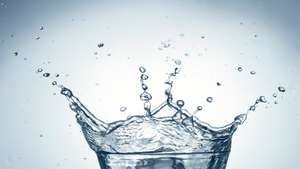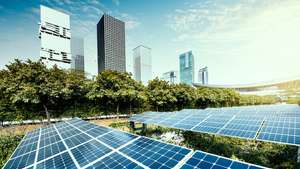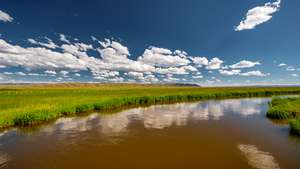
Qualitative analysis of water supply of the city of Kyiv.
 Lesya Vasilenko 1*,
Lesya Vasilenko 1*, Olena Zhukova 2,
Olena Zhukova 2, Julia Bereznitska 3
Julia Bereznitska 3
1,2,3Department of Reinforced Concrete and Stone Structures of Kyiv National University of Construction and Architecture, Povitroflotskyi Avenue, 31, Kyiv, 03680, Ukraine
Received: 03/10/2018, Accepted: 03/18/2018, Available online: 03/20/2018.
DOI: https://doi.org/10.32557/useful-2-1-2018-0003
HDL: http://hdl.handle.net/20.500.12334/44
*Corresponding author: e-mail: lesya.kiev@ukr.net
Under a creative commons license. Volume 2, Issue 1, 2018, pages: 20-49.
Author Keywords: qualitative depletion, quantitative depletion, environment, nature management, water pollution index, ecological index.
ABSTRACT
Today, a very urgent task is to analyze the water supply and quality of drinking water in Ukraine, the development of new normative documents, the improvement of existing water treatment technologies with the approximation of the standards of European countries.We based on the example of Kyiv conducted a preliminary analysis of the quality of water used for centralized water supply. The paper summarizes real hydrological information on surface water supply sources over a five-year period (the Kyiv Reservoir and the Desna River), data on the qualitative assessment of surface waters (ecological index, water pollution index), cause-and-effect relationships of environmental equilibrium, primary sources of pollution and pollutants, an analysis of the dynamics of water pollution, as well as the characteristics and volumes of discharges of pollutants Dnieper and Desnyanskaya water stations.
Introduction
In Ukraine, as in most countries around the world, there is a situation in which almost all superficial, and in some regions and groundwater, do not meet the requirements of sanitary legislation for water supply sources regarding pollution level [1]. The existing treatment facilities, their technologies for purification and disinfection of drinking water do not meet the requirements of the level of safety indicators [2, 3].
Almost 70% of the world's population uses water that does not comply with regulatory documents, 70% of surface water and 30% of groundwater lost their drinking value and went to various pollution categories: "conditionally clean," "dirty." [4-6] Statistics show that 80% of the world's diseases are associated with industrial and domestic pollution of rivers and seas. From here, dysentery, hepatitis, diphtheria, allergy, and other diseases are not accidental. [5-7] The use of chlorine in drinking water during disinfection, the absence of filters with activated charcoal leads to a large number of organic and inorganic pollutants, the combined effect of which adversely affects the health of the population. The potential danger lies in the lack of a guarantee for the removal of viruses during the preparation of water. Of the total number of water pipelines do not meet sanitary standards due to the absence of sanitary protection zones - 63.2%, the necessary complex of treatment facilities - 24.1%, disinfecting plants - 30.9% [8].
Environmental assessment is an inalienable condition for normalizing the quality of surface water, its necessary stage. Therefore, when carrying out the environmental assessment, it is necessary to provide a comparison of the results obtained with the values of the environmental standards established for the given water body. During the research period, it was a part of a large-water phase of changes in river flow. In the course of the research, the data provided by the Main Directorate of the State Sanitary and Epidemiological Service of Ukraine in the city of Kyiv were analyzed, and the qualitative and quantitative characteristics of the surface waters of the Kyiv region were analyzed (systematization, processing of environmental monitoring data of the Kyiv reservoir and the Desna River); normative methods of monitoring the state of aquatic ecosystems, resource and ecological approach to assessing the state of hydroecosystems [9,10,11,12,13].
2. Presentation of the main material of the study
Among the primary objects of anthropogenic influence on the hydrological, hydro chemical and ecological state of the Desna River, it is possible to single out the cooling reservoirs of the Smolensk and Kursk Nuclear Power Plants (located on the Seim River water intake), as well as the chemical plants of the town of Shostka.
Within the Russian Federation, the drainage of the Desna River is 80 million m3, and the discharge of wastewater is 72 million m3. In Ukraine, the volume of water abstraction is much larger and amounts to 435 million m3, wastewater discharge - 136 million m3 (from which 95% is insufficiently purified water). The sum of all discharges to the river on the territory of Ukraine and Russia is 216.72 million m3, the total water intake is 515 million m3, of which 322 million m3 is used for water supply in Kyiv. At the same time, intensive intake of salts of manganese and iron is observed, which creates difficulties in the technology of water treatment of drinking water. The Desna's waters are of the carbonate-calcium type, during the year the mineralization varies within the limits of 150 mg / dm3 (during the flood) - 345 mg / dm3 of the meadow. It should be noted that about 40% of the formation of the mineralization of the river's waterfalls on groundwater. The average annual concentrations of oxygen dissolved in the water of the Kyiv reservoir were in the range of 6.68 - 9.62 mg / dm3. The content of ammonium nitrogen compounds exceeded the permissible concentration (MPC) by 1.0 - 2.0 times in the points of the Kyiv reservoir, the nitrogen compounds of nitrite - in 1,0 - 2,5 times in the area of New Petrovtsi of the Kyiv reservoir and in the points of the Kanev reservoir. The average annual concentrations of copper compounds were within the limits of 1 - 22 MPC, zinc -1.7 - 5.8 MPC, manganese - 1.5 - 11 MPC, chromium hexavalent - 4 - 7 MPC in the sections of the Kyiv reservoir.
Over the past three years, there has been a trend towards a reduction in total water disposal volumes, which is associated with a reduction in the intake and use of water. At that time, the discharge of contaminated sewage into the surface water bodies of the Kyiv region is increasing, which in 2016 was 4.745 million m3. According to 2015, increased by 101.8 million m3. and by 291.3 m3 in comparison with 2014.
According to calculations for the Desna river, during this period there were mainly I-II class quality: "clean" and "very clean." The water pollution index averaged over a long period, grows along the river from 0.56 to 0.73. At the same time, the waters of the Desna River are averaged by the indicator, up to the second class of quality, that is, "clean."
The results of the assessment are presented in the form of a single environmental assessment based on the conclusions of the three blocks. The stage of generalization of water quality assessments for individual indicators with the definition of integral values of classes and categories of water quality is performed only by analysis of indicators within the respective blocks. This generalization consists in determining the average and worst values for the three-block water quality indexes, namely: for the index of contamination by components of the salt composition (I1), for trophy-saprobiological (ecology-sanitary) index (I2), for the index of specific indicators of toxic and radiation effects (I3). The average values for the three-block water quality indexes are determined by calculating the average category number for all indicators of this block: category one has number 1 category two - number 2, etc. The average values of block indexes can be fractional numbers. The worst values for the three-block water quality indices are determined about the worst indicator (with the highest category number) among all the indicators of this block.
So, according to calculations, for the Kiev reservoir I1 (index pollution with components of salt composition) is equal to 1.33, I2 (ecological and sanitary index) - 3.44, I3 (index of specific indicators of toxic effect) - 3.67; for the Desna River, I1 - 1.0, I2 - 2.91, I3 - 3.8 conventional units. Dynamics of changes in water quality in the basin of the river. Dnepr for the ecological index are shown in Figure 1.

The availability of high-quality drinking water in an amount that meets basic human needs is one of the conditions for strengthening people's health and sustainable development of the state. Any failure to comply with the quality standard of drinking water can lead to unfavorable, both short-term and long-term consequences for the health and well-being of the population.
In quantitative terms, the city is satisfied with drinking water completely, but it is becoming increasingly difficult to provide quality indicators. Pollutants fall into water bodies during the discharge of treated sewage from the Bortnicheskaya station of aeration and sewage from the Dnieper and Desnyanskaya waterworks. Characteristics and volumes of discharges of pollutants by water supply stations of the Department of operation of water supply facilities to the Dnieper River are presented in Table 1.

Currently, the population of the city is fully provided with centralized drinking water supply, the production indicators of the water supply are as follows: water supply - 339.6 million m3 / hour; sale of water - 283.1 million m3 / hour (including 236.4 million m3 / hour for the population); losses and unaccounted water costs - 56.5 million m3 / hour.
The sources of drinking water supply in Kyiv are surface waters of the Dnieper (Kyiv Reservoir) and Desna rivers - 89%, and underground waters of the Senoman and Jurassic aquifers - 11% [15].
The total projected capacity of the household water supply in Kyiv is 2100 thousand m3 / day, incl. from the Dnieper water supply station - 600 thousand m3 / day, from Desnyanskaya waterworks - 1080 thousand m3 / day, from the artesian water pipeline - 420 thousand m3 / day.
In 2015, water use from surface water sources amounted to 255.2 million m3 of water.
According to the results of calculations, in 75% the III class of water quality prevails, which corresponds to the "moderately polluted" water quality level and 25% to the fourth class "contaminated."
In general, there are 98 sampling points of tap water in the city of Kyiv, which are checked according to the State Sanitary Standards "Hygienic requirements for drinking water intended for human consumption" [1], and all of them have water quality within acceptable limits, However, it is not possible to obtain detailed information on the content of each indicator that is subject to control. Thus, the number of sampling points cannot be sufficient for a city like Kyiv. To analyze the quality of the condition of tap water in the city, it is necessary to create a sampling network and, based on their results, to judge the state of the city's drinking water supply system.
Conclusion
Assessment of the ecological status of water sources in Kiev, based on the data of the archive of the Central Geophysical Observatory, made it possible to conclude the quality of the water intake for the city's water supply. The ecological state of water is improving in recent years, which indicates a decrease in anthropogenic impact and is confirmed by indicators of chemical quality, as well as environmental indices and all its components.
References
[1] DSanPiN2.4-171-10 "Hygienic requirements for drinking water intended for human consumption". - Electronic resource. - Access mode: http://search.ligazakon.ua/l_doc2.nsf/link1/RE17747.html.
[2] Udod V.M., Yatsiv M.Y. “Sustainable development of hydro ecosystems - the basis of environmentally friendly water use”. - Ecological safety and nature management. - 2011, v.7, p.136-155.
[3] Udod V. “Environmental assessment of the anthropogenic transformation of the river. Ingulets”. - V.M. Udod, I.L. Wildman. - Biosphere compatibility (people, region, technology). - Bryansk, 2014. - Issue. 2. - Bryansk, 2014. - P. 27 - 32.
[4] Danilov-Danilyan V.I. “Global problem of freshwater deficit.” - The age of globalization. - 2008. - №1. - p. 45-56
[5] Danilov-Danilyan V.I. “Consumption of water: ecological, economic, social and political aspects.” - I. Danilov-Danilyan, K.S. Losev. - Moscow: Science, 2006. – 221 p.
[6] Levkovsky S.S. “Rational use and protection of water resources.” – S.S. Levkovsky, M.M. Padoon - K.: Lybid, 2006. - 280 p.
[7] Yatsik A.V. “Water Resources: Use, Protection, Reproduction, Management: A Textbook for Students. Instructional Laws.” – A.V. Jacyk, Y.M. Grishchenko, L.A. Volkova, I.A. Passionate - K .: Genesis, 2007. - 360 p.
[8] “National report on drinking water quality and drinking water supply in Ukraine in 2013.” - Electronic resource. - Access mode: http://old.minregion.gov.ua/attachments/content-attachments/4026/2013.pdf
[9] Karushev A.B. “Methodical bases of an estimation and regulation of anthropogenous influence on quality of superficial waters.” - L .: Gidrometeoizdat, 1987. - 175 p.
[10] Andrusyak N.S. “Methodology of integrated assessment of the ecological state of recreational resources.” - Scientific Notes of the Taurida National University named after V.I. Vernadsky Series: Geography. Volume 24 (63). - 2011. - No. 2. - Part 2. - p. 3-7.
[11] Osadchy V.I., Nabivanets B.Y., Osadcha N.M., Nabivanets Y. B. “Hydrochemical Directory (Surface Water of Ukraine, Hydrochemical Calculations, Methods of Analysis).” - Nika - Center, 2008 – 656 p.
[12] Jacyk A.V. and other. “Method of calculation of anthropogenic loading and classification of ecological status of basins of small rivers of Ukraine.” - K .: Ministry of Environmental Protection of Ukraine.-2007 – 71 p.
[13] Loboda N.S. “Estimation of water quality in the Desna River according to a complex of hydrochemical indicators.” - S. Loboda, M.E. Dows, Y.L. Dyerychenko. - Bulletin of the Odessa State Ecological University. - 2014 - Issue 18. - p.124-133.
[14] “Regional report on the state of the environment in Kyiv in 2015.” - Electronic resource. - Access mode: http://www.menr.gov.ua/docs/activity-dopovidi/regionalni/rehionalni-dopovidi-u-2015-rotsi/Kiev_2015.pdf
[15] “State water cadastre. Annual data on the quality of surface waters of land. Part 1. Rivers and canals. Dnipro Basin”. - State Committee of Ukraine for Hydrometeorology. Central Geophysical Observatory. - 2011-2015. - Volume 2. - Issue 1. (2012 - 2016 -K .: OPS Ukr GMC, 2012 - 2016).
Please cite as: L.Vasilenko, O.Zhukova, J.Bereznitska “Qualitative analysis of water supply of the city of Kyiv.” USEFUL online journal, vol. 2, no. 1, pp. 20–29, March 2018. DOI: https://doi.org/10.32557/useful-2-1-2018-0003








Comments